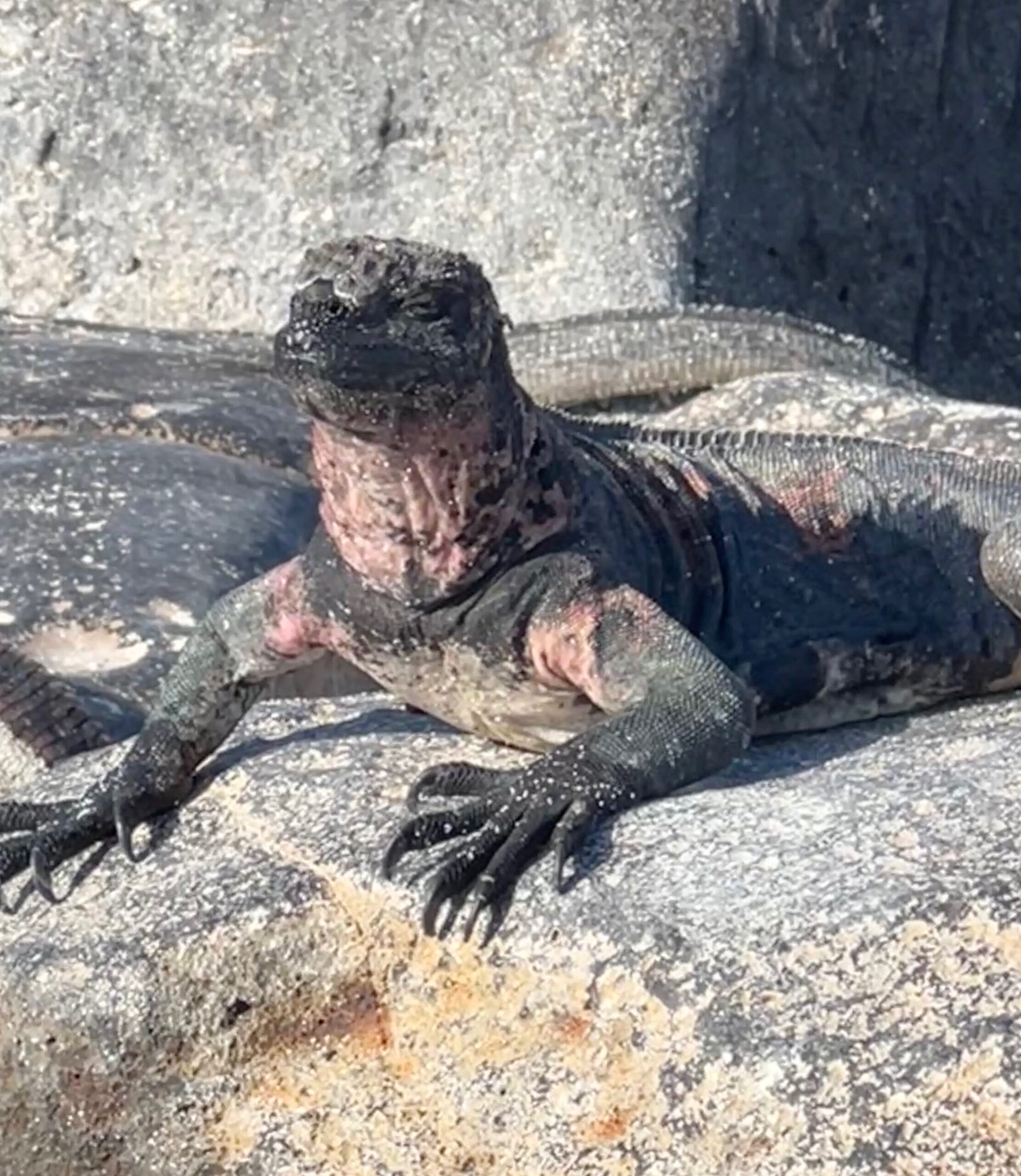Celebrity Flora provides pretty much everything a guest could need on a Galapagos trip including wet suits, snorkeling equipment, backpacks, water bottles and even sunscreen. And we used most of everything above for our first excursion.
Espanola is one of the uninhabited islands of the Galapagos. Only four of the archipelago’s thirteen major islands have human populations: Santa Cruz, San Cristobal, Isabela and Floreana. Our first wet landing was on the beach at Bahia Gardener and our welcoming committee was a colony of sea lions. These guys were quite a bit smaller than the ones we see in Cabo San Lucas every year, more the size of seals. How does one tell the difference? Sea lions have tiny external ears. When not out hunting for food there is a lot of resting going on. We weren’t supposed to get within 8 feet of any wildlife, but let me tell you, the wildlife wasn’t following the rules.
Sea lion pups are very playful and want to interact. I think I smiled the entire time we were there. We also saw lava lizards with red throats, oyster catchers with their bright red beaks, and very friendly mockingbirds, eager to check out our backpacks. This was also the first sighting of the marine iguanas; Galapagos is the only place in the world they exist. They have external spikes down their backs, a marked difference from their land brethren. They swim, dive and eat algae, but mostly we saw them piled on top of each other for warmth on the lava rock. When wet they’re black, but as they dry out their colors become more prevalent, a mix of red and green.
After our beach walk it was time to snorkel. We’d brought the wet suits, but the water was warmer than our back yard beach on Buzzard’s Bay in June and we didn’t use them. We were two of the few that didn’t. While the sea was churned up a bit we were still able to see some lovely schools of yellow tailed surgeonfish and a couple of stingrays. And the warm water truly was glorious.
We moved to a different part of Espanola in the afternoon and took a more difficult walk over large boulders for some bird watching. And we were rewarded with sightings of Nazca boobies, one of the three boobies on the archipelago, waved albatross with a 7-foot wingspan, and frigate birds and tropicbirds flying high above us. The albatross was a treat, as the naturalists said there hadn’t been any the week before.
They are graceful in the sky, but not so much on land where we watched them waddle about. Some interesting facts: They mate for life and can live to be 45 years old. Their nests are on flat ground, and they roll their single egg around, sometimes as far as 100 feet, supposedly to encourage more successful hatching. And like most everything else we encountered they really have no fear of humans, as everyone comes to look but not touch. A lesson for the world.
Next up – Espanola and Floreana



Fascinating!